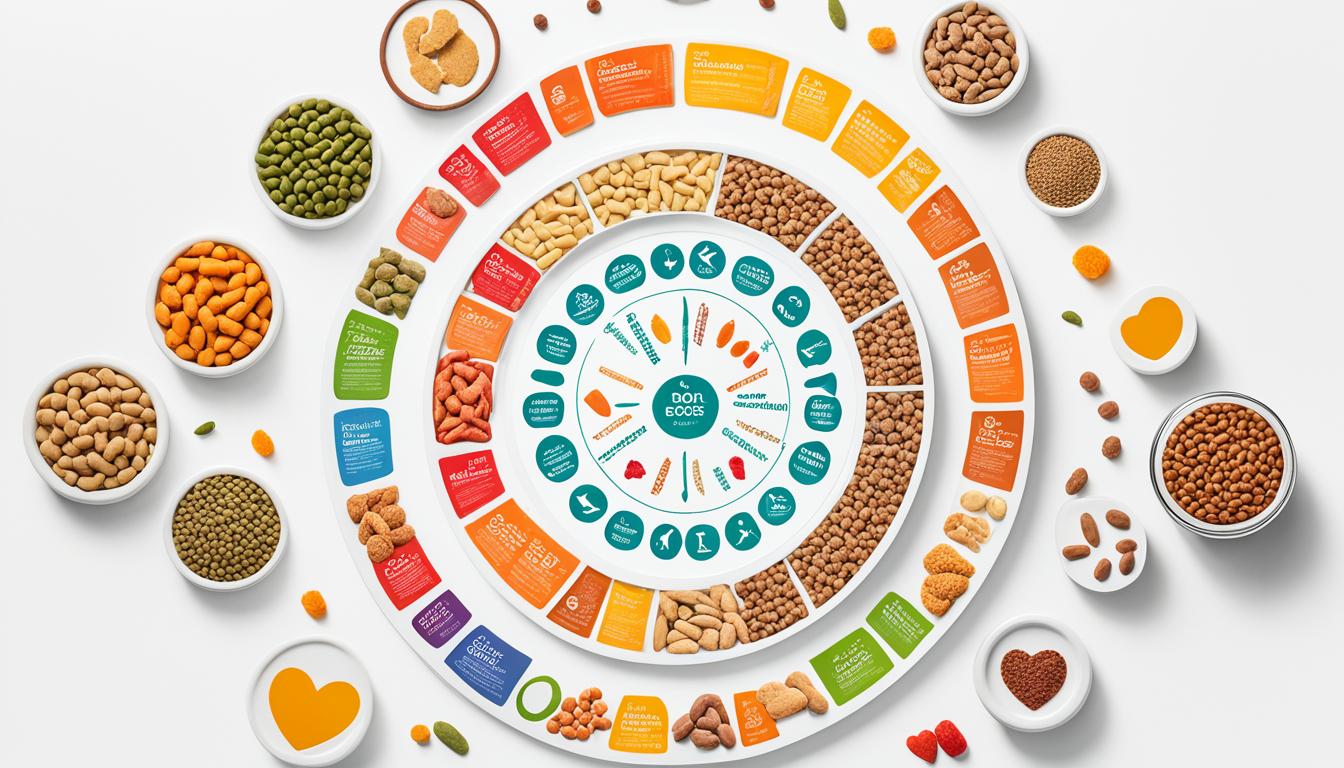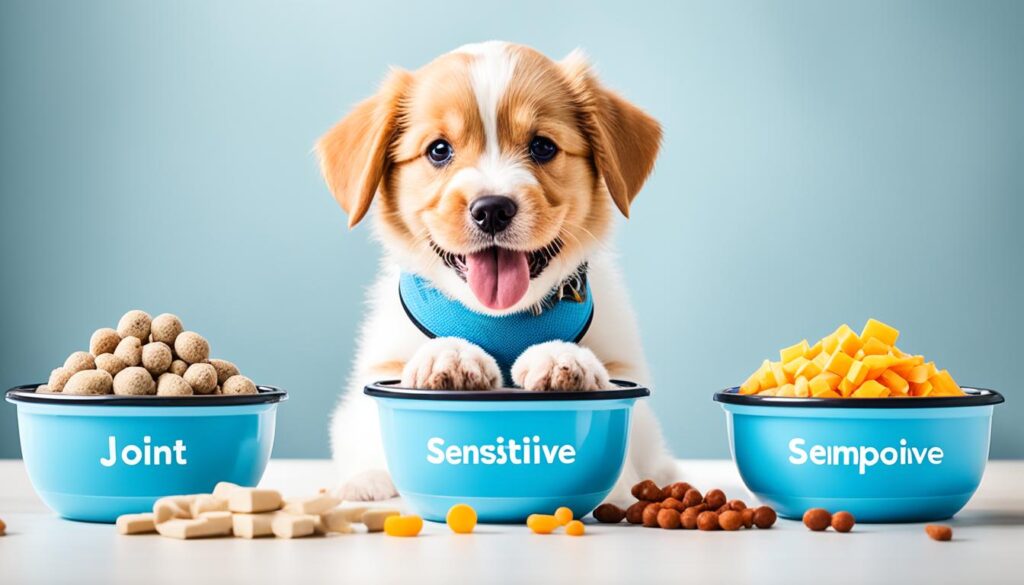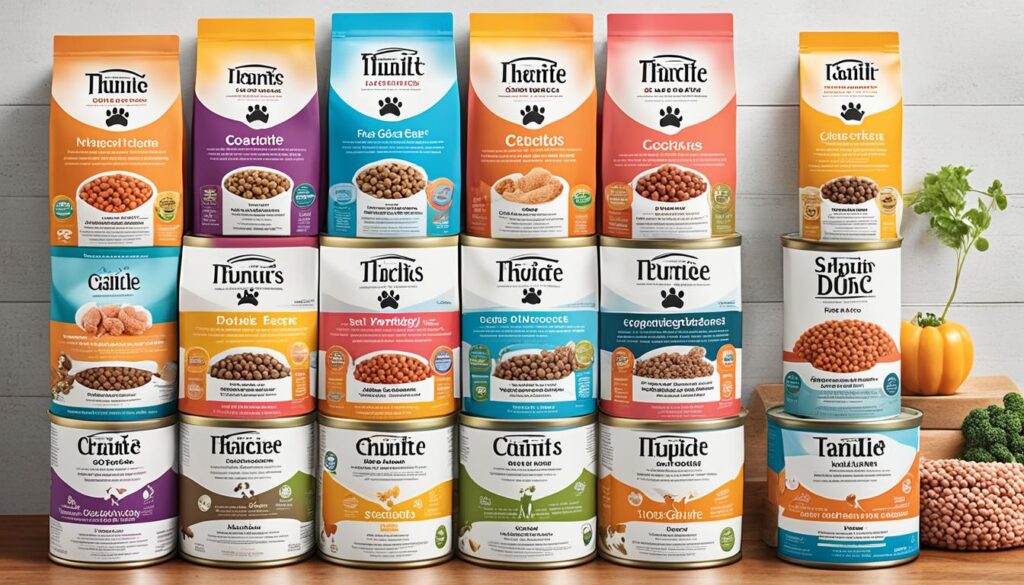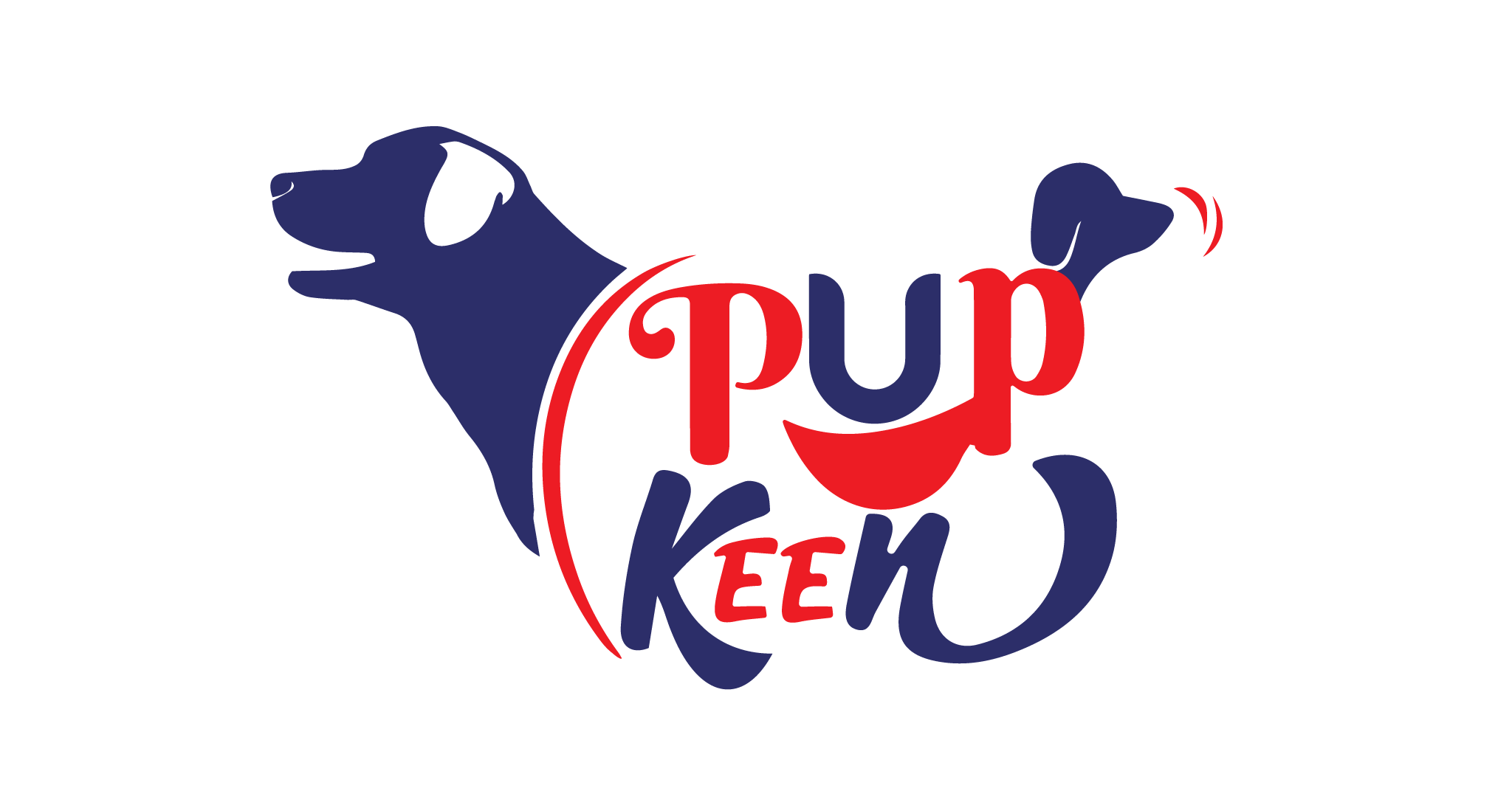Ultimate Guide: Choosing the Best Dog Food for Multiple Health Issues

Do you know 85% of pet owners struggle to choose the right dog food for their dogs with health issues? I do. That’s why I’ve put together this to help you in your search for multi condition dog food and healthy options.
Choosing the right food for dogs with sensitive stomachs or health problems can be hard. With so many options from special diets to homemade meals it’s important to know what your dog needs. This will help you choose the best food for your dog.
Let’s look into canine nutrition and find the perfect multi-condition dog food. This food will address your dog’s health issues and get them the nutrients they need.
Key Takeaways
Multi-condition dog food tackles multiple health issues
Nutritious formulas for sensitive stomachs
Commercial dog food at various price points
Protein content in good dog food 25-35%
Gradual food transition to prevent digestive upset
Consult a vet for specific health concerns
Understanding Multi-Condition Dog Food
I found out that multi-condition dog food is a big help for our pets. It’s made to address several health problems at once. Feeding our dogs will be easier for us. Let’s look into why this food is good and how it helps our dogs.
What is multi-condition dog food?
Multi-condition dog food is a special mix of nutrients. It’s like a super meal for dogs, fighting off different problems with each bite. This food is especially good for older dogs or those with weight issues and skin allergies.
Benefits of specialized nutrition
Feeding our dogs special nutrition has many perks. It makes feeding easier and supports their health fully. For instance, one formula can help with weight, joint health, and skin issues all at once.

Common health issues addressed
Multi-condition dog food tackles many health problems:
- Skin allergies and coat problems
- Weight management for overweight or obese dogs
- Joint health and mobility issues in senior dogs
- Digestive sensitivities
Did you know 35% of dogs face or could face multiple health issues? That’s why multi-condition food is so important. It’s not just for one problem; it’s for overall health and better quality of life for our dogs.
| Health Issue | Percentage of Dogs Affected | Key Nutrients in Multi-Condition Food |
|---|---|---|
| Skin Allergies | 10-15% | Omega-3 fatty acids, Vitamin E |
| Weight Management | 25-30% | High-quality protein, Fiber |
| Joint Issues (Senior Dogs) | 20% | Glucosamine, Chondroitin |
Nutritional Requirements for Dogs with Multiple Health Issues
Dogs with health problems need a balanced diet. I’ve learned that the same rules for puppy food also apply to adult dogs with health issues. It’s important to focus on high-quality proteins, fats, and the right vitamins and minerals.
Protein is key for muscle repair and growth. The Association of American Feed Control Officials (AAFCO) says adult dogs need at least 18% protein, and puppies need 22%. But it’s not just about how much you give them. Choose easily digestible protein sources for your dog’s food.

Fats give energy and skin health. Essential fatty acids like omega-3s and omega-6s are important for dogs with skin or joint issues. Carbs give energy and digestion. But how much they need depends on your dog’s activity level and health.
Breed specific diets can be helpful as different breeds have different nutritional needs. Big breeds need joint nutrients, small breeds need more calorie dense foods. Always talk to your vet to make a nutrition plan for your dog’s health issues.
| Nutrient | Function | Important for |
|---|---|---|
| Protein | Muscle repair and growth | All dogs, especially active or growing |
| Fats | Energy and skin health | Dogs with skin issues or low energy |
| Carbohydrates | Energy and digestion | Active dogs, those with digestive issues |
| Vitamins & Minerals | Overall health support | All dogs, especially those with multiple health issues |
As dogs age their needs change. Puppies need more protein and fat, seniors need fewer calories and more fiber. Knowing this helps you feed your dog right.
Key Ingredients to Look for in Specialized Dog Food
Choosing the right food for dogs with health issues is tough. It’s important to focus on key ingredients. Let’s look at what makes specialized dog food good, like limited ingredients and grain-free options.
High-quality Protein Sources
Protein is key for muscle health. Healthy dogs do well on 22-26% protein in their diet. Look for named meats as main ingredients. This makes sure your dog gets the amino acids they need.
Essential Fatty Acids
Omega-3 and omega-6 fatty acids are important for skin and coat health. Aim for dog food with 11-15% total fat. Fish oils, canola oil, and chicken fat are good sources.
Antioxidants and Vitamins
These help boost immunity. Important vitamins are A, B, D, E, K. Minerals are zinc, iron, manganese. Some brands add superfoods like pumpkin, kale, blueberries for extra nutrition.
Fiber and Prebiotics
Fiber is good for digestive health. Prebiotics like Enterococcus Faecium and Lactobacillus Acidophilus for gut health. Many grain free options use peas and lentils as fiber sources.

| Beneficial Ingredients | Ingredients to Avoid |
|---|---|
| Named meat sources | Corn syrup |
| Fish oils | Artificial food coloring |
| Vitamins and minerals | BHA, BHT, Ethoxyquin |
| Probiotics | Rendered fat |
| Healthy carbohydrates | Propylene glycol |
Avoiding Harmful Ingredients and Additives

When I choose food for dogs with sensitive stomachs or skin allergies I always check the ingredient list. Many commercial dog foods have additives that can make health issues worse.
I don’t use artificial preservatives like BHA, BHT, ethoxyquin. These are linked to health issues in dogs – skin problems and bowel problems. I choose foods with natural preservatives like vitamin E and C.
Artificial colors are also a concern. They don’t add nutrition and can cause allergic reactions. I avoid foods with these additives.
Fillers like corn, wheat, and soy have little nutritional value and can upset dogs with sensitive stomachs. I prefer foods with whole, recognizable ingredients for better nutrition and easier digestion.
| Ingredients to Avoid | Potential Health Risks |
|---|---|
| BHA, BHT, Ethoxyquin | Skin issues, irregular bowel movements, depression |
| Artificial colors | Allergic reactions, skin allergies |
| Corn, wheat, soy | Digestive upset, sensitive stomach |
| Animal by-products | Low nutritional value, potential contaminants |
By avoiding these harmful ingredients and choosing high-quality, natural dog food, I can better manage my dog’s sensitive stomach and skin allergies.
Tailoring Diet to Specific Health Conditions
It’s crucial to feed our dogs the right food. Multi-condition dog food has formulas for different health issues. Let’s see how to match your dog’s diet to their health needs.

Joint Health and Mobility
If your dog has joint problems, look for food with glucosamine and chondroitin. These help keep cartilage healthy and improve movement. Omega-3 fatty acids also help reduce swelling.
Digestive Sensitivities
Dogs with sensitive stomachs do well on food with easy-to-digest proteins and probiotics. Foods with fewer ingredients and new proteins can ease stomach troubles.
Skin and Coat Issues
For a healthy coat and skin, pick food rich in omega-3 and omega-6 fatty acids. These fats make skin and fur healthy. Vitamin E and zinc are key for skin health too.
Weight Management
For overweight dogs, choose foods with fewer calories but more fiber. These foods make dogs feel full on fewer calories. Foods high in protein also help with weight loss by keeping muscle while cutting calories.
Every dog is different. Always talk to a vet to find the best food for your pet’s health needs. They can guide you to the right mix of nutrients for your dog’s health.
Wet vs. Dry Food for Dogs with Multiple Health Issues
Choosing between wet and dry food for dogs with health issues is tough. Both types have good points, especially for senior dogs and puppies.
Dry kibble is cheaper and easy to use. It’s good for your dog’s teeth because it helps clean them. Vets suggest it for dogs with stomach problems because it’s easy to control how much they eat, helping with weight control.
Wet food has more moisture, which is good for dogs with bladder issues or who need more water. It’s also great for picky eaters, which is common in older dogs.

Think about what your dog needs when picking food. Some dogs do well with both types. For example, older dogs might like wet food better, while puppies need the nutrients in dry kibble.
| Factor | Dry Food | Wet Food |
|---|---|---|
| Water Content | 5-10% | 75-85% |
| Cost | More affordable | More expensive |
| Dental Health | Better | Less beneficial |
| Hydration | Less hydrating | More hydrating |
The best food for your dog depends on their health needs. Talk to your vet to find the right food balance for your pet.
Transitioning to a New Diet Safely
Switching your dog to a new diet can be tricky, especially for those with sensitive stomachs. I’ve found that a gradual approach works best when introducing new formulas. This method helps prevent digestive upset and ensures a smooth transition.
Gradual Introduction Methods
To safely introduce new food, I follow a week-long transition plan:
- Days 1-2: Mix 25% new food with 75% old food
- Days 3-5: Increase to 50% new food and 50% old food
- Days 6-7: Shift to 75% new food and 25% old food
Monitoring Your Dog’s Response
I keep an eye on my dog during the transition. I watch for changes in appetite, stool and energy. You need to watch for any signs of digestive upset or allergic reactions.
When to Consult a Veterinarian
If I see any adverse reactions or if my dog has pre existing health issues I don’t hesitate to call the vet. They can help me adjust the transition plan or recommend a formula for dogs with sensitive stomachs.
| Transition Stage | Old Food | New Food | Duration |
|---|---|---|---|
| Initial | 75% | 25% | 2 days |
| Middle | 50% | 50% | 3 days |
| Final | 25% | 75% | 2 days |
Homemade and Raw Diets: Pros and Cons
Many dog owners are turning to homemade and raw diets for their dogs. They are looking for breed specific diets and fewer ingredients. I looked into this trend and found some interesting facts. For example racing greyhounds and sled dogs have been eating raw food for a long time. This has people interested in it for their dogs at home.
Raw diets like the BARF (Bones and Raw Food) diet started in 1993 by an Australian vet Ian Billinghurst. They claim these diets will make dogs have shinier coats, healthier skin and more energy. Some dog owners have seen their dogs get healthier when they switched to these diets.
But there are risks to consider. The FDA studies found raw pet food is more likely to have harmful bacteria than commercial pet food. This can be dangerous for dogs and their owners. Raw diets can also be unbalanced and lead to bad coats, weak bones and anemia.
If you’re considering homemade or raw diets for your dog with health issues, talk to a vet nutritionist. They can create a balanced meal plan for your dog. This will meet your dog’s nutritional needs and reduce the risks. Remember these diets require careful planning and preparation to be safe.
Supplements and Additives for Enhanced Nutrition
Many dog owners add supplements and additives to their pet’s food for better nutrition. These extras help meet specific health needs of dogs.
Most pet owners, 92%, think homemade dog food is healthier than store-bought. This belief has made them look into adding supplements to their pets’ diets.
Before adding supplements, it’s important to talk to a vet. They can suggest the best additives for your dog’s food. Some common ones include:
- Probiotics for digestive support
- Glucosamine for joint health
- Vitamins and minerals to fill nutritional gaps
It’s important to keep supplements in check. This way, the main food stays the main source of nutrition.
| Common Additives | Benefits |
|---|---|
| Eggs | Protein boost |
| Raw meats and organs | Essential nutrients |
| Cooked veggies | Fiber and vitamins |
| Yogurt or kefir | Probiotics |
| Canned pumpkin | Digestive health |
Choosing the right supplements and additives can make your dog’s food better. It helps create a diet that’s just right for their health.
Choosing the Right Brand: Factors to Consider
When picking multi-condition dog food, I look at the brand’s reputation and research. It’s key to find companies that focus on nutritious formulas supported by science.
Company Reputation and Research
I choose brands with veterinary nutritionists and peer-reviewed studies. This shows they base their food on strong science.
Quality Control Measures
Great brands have strict quality checks. I see if they test each batch for safety and nutrients. This is vital for multi-condition dog food, where exact nutrition matters.
Ingredient Sourcing and Transparency
I like brands that are transparent about their ingredients. Sharing their formula builds trust. I reach out to companies to ask about their products and how they work.
| Factor | Why It Matters |
|---|---|
| AAFCO Statement | Confirms nutritional adequacy |
| Third-party Testing | Ensures food safety and quality |
| Veterinary Formulation | Guarantees expert-designed nutrition |
| Ingredient Origin Disclosure | Promotes trust and transparency |
The right multi-condition dog food can make a big difference for health issues. By looking at these factors I can choose a brand that has options for my dog’s needs.
Conclusion
I’ve looked into dog food for dogs with many health issues. You need to find the right balance for them. Studies on dog nutrition show digestibility and nutrient levels matter a lot.
Multi-condition dog food can be very different. Some top brands scored 72.6% to 87.7% in digestibility tests. So we need to check the nutritional value of each food type.
In summary, choosing the best dog food takes thought. We need to find foods that meet our dog’s health needs and are easy to digest. Always check with your vet and watch your dog when you introduce new foods to keep them healthy and happy.




